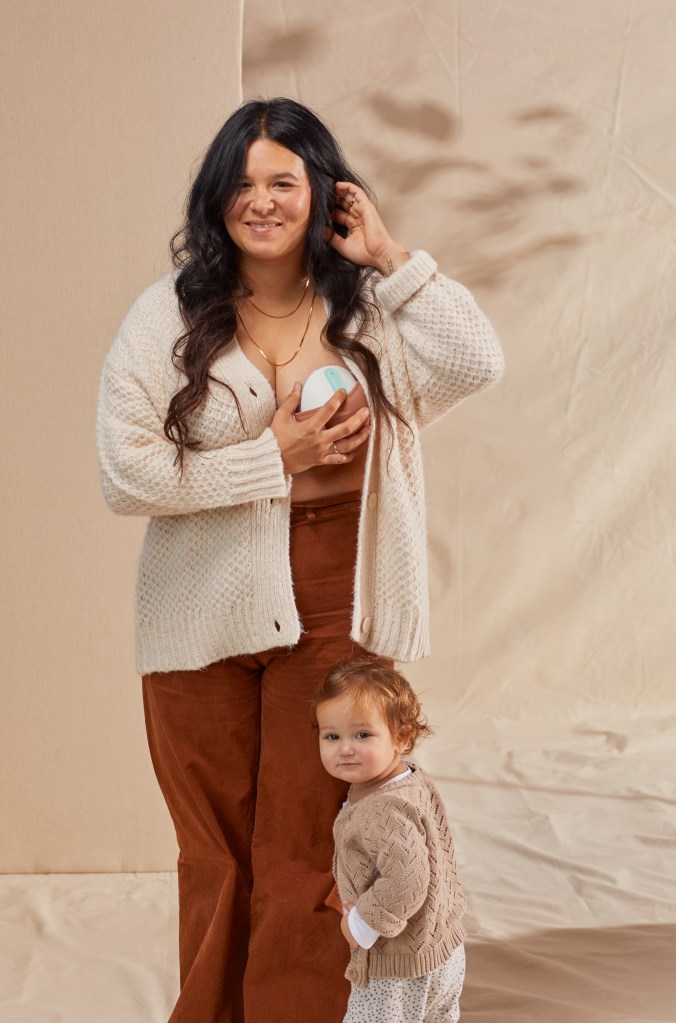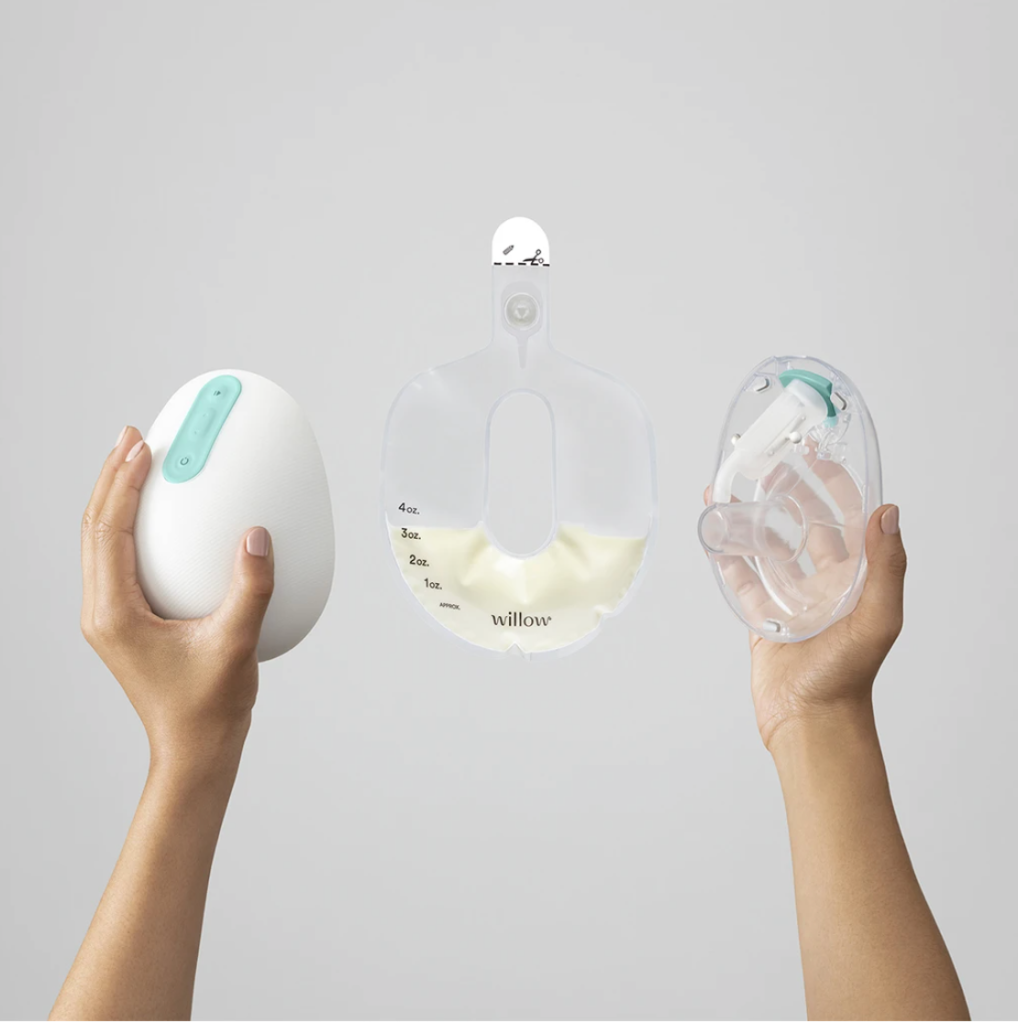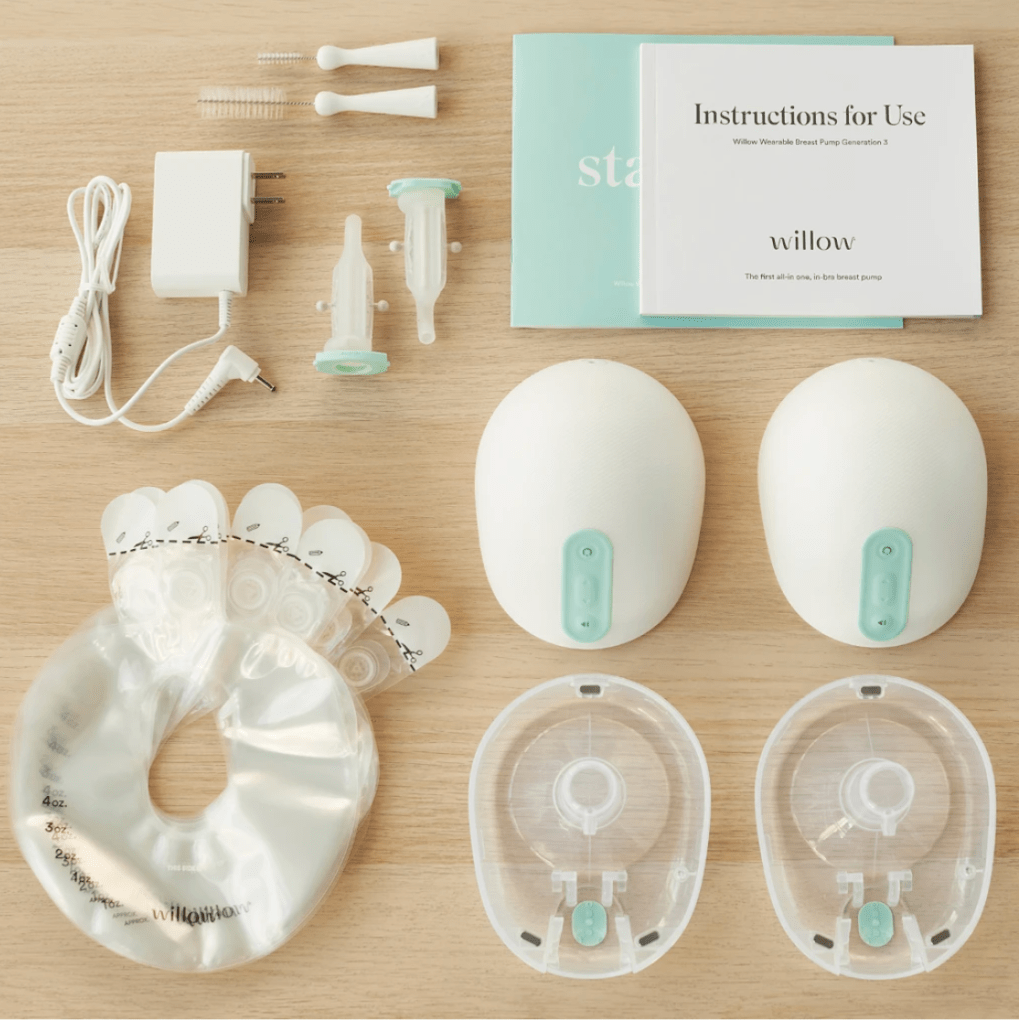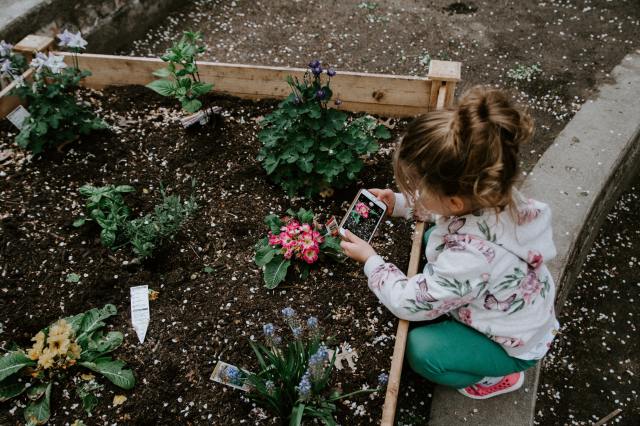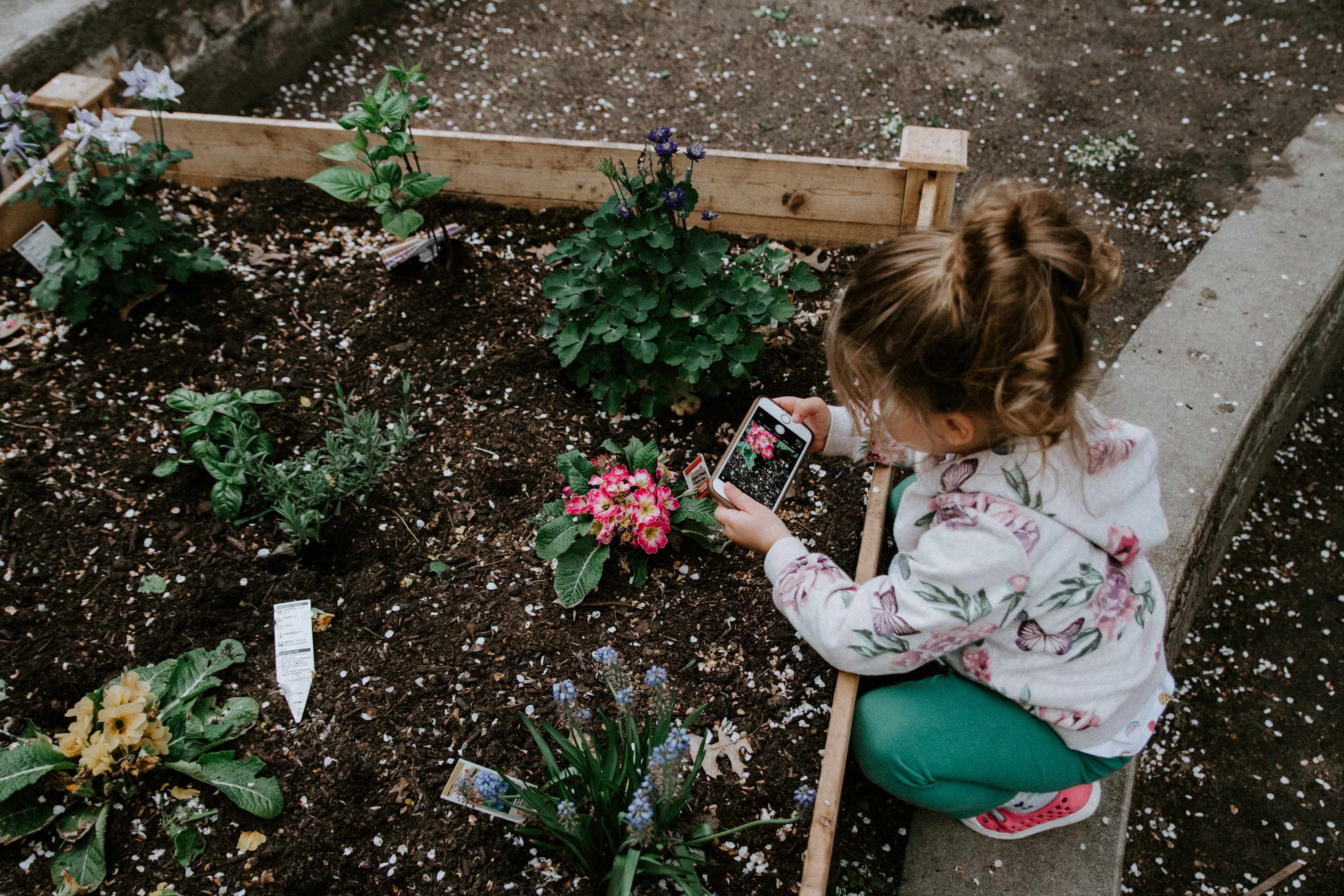Our series, Family Tales, is an honest peek into the daily lives of families across the country who are on this crazy ride we call parenthood! From divulging childcare costs to breaking down family finances to managing a virtual school year with multiple kids, we tap into the Red Tricycle army of parents to find out how they’re making it work. This series is a judgment-free zone.
Interested in telling your story? Start by filling out our questionnaire here. All stories are anonymous.
Distance Learning Is Not My Family’s Ideal Choice. Here’s How We’re Making It Work.
Name and occupation: Beth Shea, San Diego Editor at Red Tricycle
My partner’s occupation: Sales Manager
City: San Diego, CA
Grades my kids are in: daughter in 8th, son in 4th. They go to the same public school.
School set-up in 2020: Our school district is currently only offering distance learning. When they get the green light to go back to school in-person, the students will be split into attending morning or afternoon sessions to lessen the amount of kids on campus at one time. Many precautions and safety protocols will be in place and my kids will go back to school as soon as they’re allowed to.

The concept of ending summer to head “back to school” was an even harder sell for my kids this year since none of the excitement of seeing classmates and teachers and returning to campus was on the table. Our school district even gave our kids several extra weeks of summer in an effort to drop off the state’s Covid-19 watch list and return to in-person learning. We did in fact drop off the list, but then got word that school would still only be offered virtually for the time being. The yo-yoing and excitement over the prospect of going back and the disappointment of realizing this year there was no “back” in “back to school” has made this an emotionally and mentally draining time for our whole family.
My kids are ready to step out from behind the screens and go back to school. They are both social butterflies and extroverts and they enjoy absolutely nothing about being isolated behind a screen for hours on end every day. They learn better when lessons are taught in person and they thrive in settings where they can interact with their peers. Seeing them at home all this time is akin to watching beautiful birds who have had their wings clipped.
I’m trying to use this distance learning experience to teach my kids some vital life skills: grit, resilience, and how to adapt to change. Thus far, we have been dealing with a pretty steep learning curve of failed log-ins, links that don’t connect and online portals we can’t access… but we’re all trying to keep our cool and our sanity and have a lot of grace for each other and the teachers on the other end trying to orchestrate all of these moving parts.
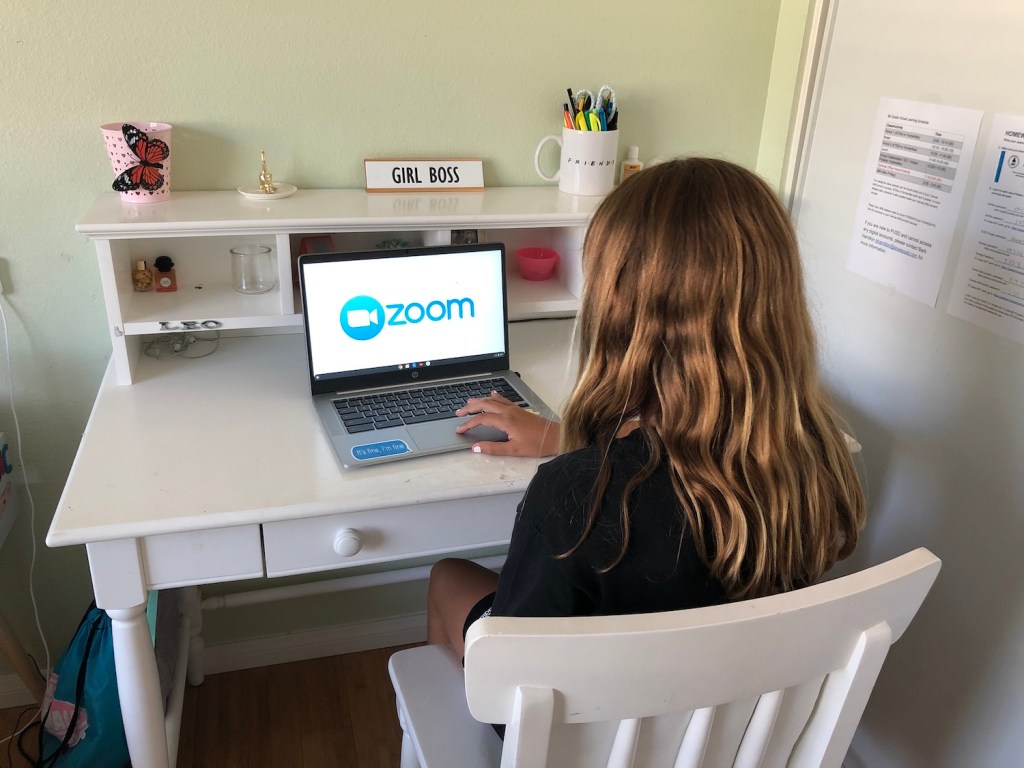
Morning Routine: Up Early to Prepare for the Day
Luckily we’re all early risers, so we wake up ready to greet the new day and sit around the table for breakfast. My kids start school at 8:50 a.m. so it allows for a nice, leisurely start to the day. I also use this early morning time to make sure my kids’ laptops are charged, that the learning supplies they need are close at hand, and that they can log-on to all of their various applications. We save our passwords and bookmark important pages so all they need to do is click and go.
One issue we had to correct was that our Wifi signal wasn’t reaching far enough to provide a strong enough signal. My daughter’s Zoom calls kept freezing or dropping, which led to panic. We purchased this WiFi booster, programmed it, and now it “boosts” the WiFi signal so it reaches her room and enables a strong signal.
After breakfast we all go to our own corners of the house to log-on for school and work. I fill each of us a large bottle of water in our respective reusable water bottles, and I pop a packet of Ultima Replenisher Electrolyte Hydration Powder in each bottle. San Diego’s hottest temperatures are during the fall months, so I like to make sure we’re all staying hydrated––especially since dehydration leads to fatigue and immune stress. (Hydration is important during winter too!) These handy packets come in a variety of flavors from lemonade to raspberry and they really make it easy to get our necessary water intake alongside 6 electrolytes and trace minerals.
Both of my kids start their day with an hour and a half long Zoom session of STEM learning, followed by a mid-morning snack break. They like the option of staying connected on their Zoom call during snack break to chat and eat alongside their classmates. After snack they log on to their next major chunk of learning for the day, their hour and a half long session of Humanities. Next comes independent work, reading time and PE or music lessons (my son is learning to play the recorder).
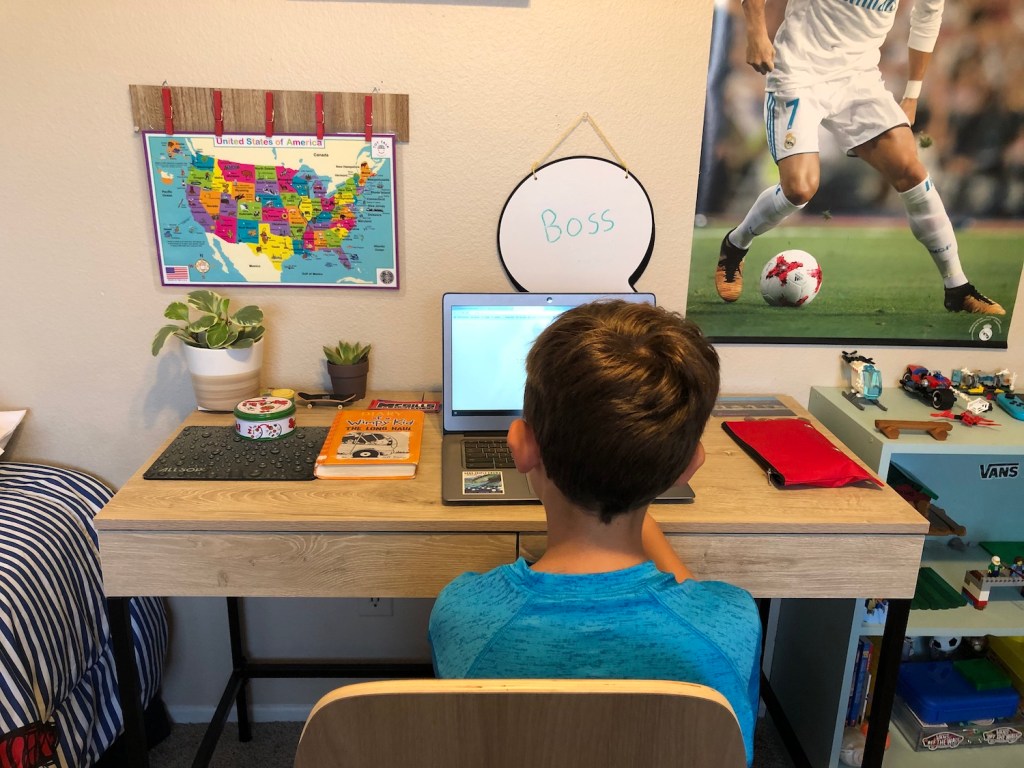
Mid-Morning to Lunchtime: We All Head to Our Separate Workspaces, Kind Of
I spent the summer preparing for the inevitable eventuality of distance learning by making sure my kids had functional, comfortable workspaces tailored to their liking. They set up their own desk decor and even have some fidget toys on hand to get them through long Zoom calls: we like these stress balls. I’m currently on the hunt for a cushion for my son’s desk chair because he’s not ergonomically well-positioned at his computer. I have my eye on this chair cushion to provide a boost and comfort.
Another absolute must-have for every member of our family for distance learning and work: CalmOptics blue light blocking glasses. Now that we’re all on screens for a large part of the day, it’s essential that we wear these protective glasses to prevent eye strain, itchy eyes, headaches and even trouble sleeping––which can all be caused by blue light from screens. We love our glasses so much we even wear them to watch TV and my son wears them when playing video games as well. They’re a lifesaver anytime you have to look at a screen. CalmOptics glasses come in multiple sizes for little kids, teens and adults, so everyone’s covered––and the styles and colors are super cute too.
It’s vital that we all have our own separate workspaces because we all work better with no distractions. I work while my kids are in their rooms on their school calls, and they just give a shout if they need me––usually to solve a tech issue.
While I have a home office, I find myself migrating around the house a lot more with my laptop to be closer to my kids as we acclimate to connecting to Zoom calls and sorting out all the various school programs they need to navigate online. They often have questions and need support during these early weeks of this new way of doing school, so it’s easier for me to be nearby. My kids have always been respectful of my need to do my job (I’ve worked from home their whole lives), so they understand that more often than not, their downtime is my work time. When my kids were physically at school, I had large chunks of time alone to complete my work. Nowadays I have been working more late nights when it’s silent and I can work uninterrupted.
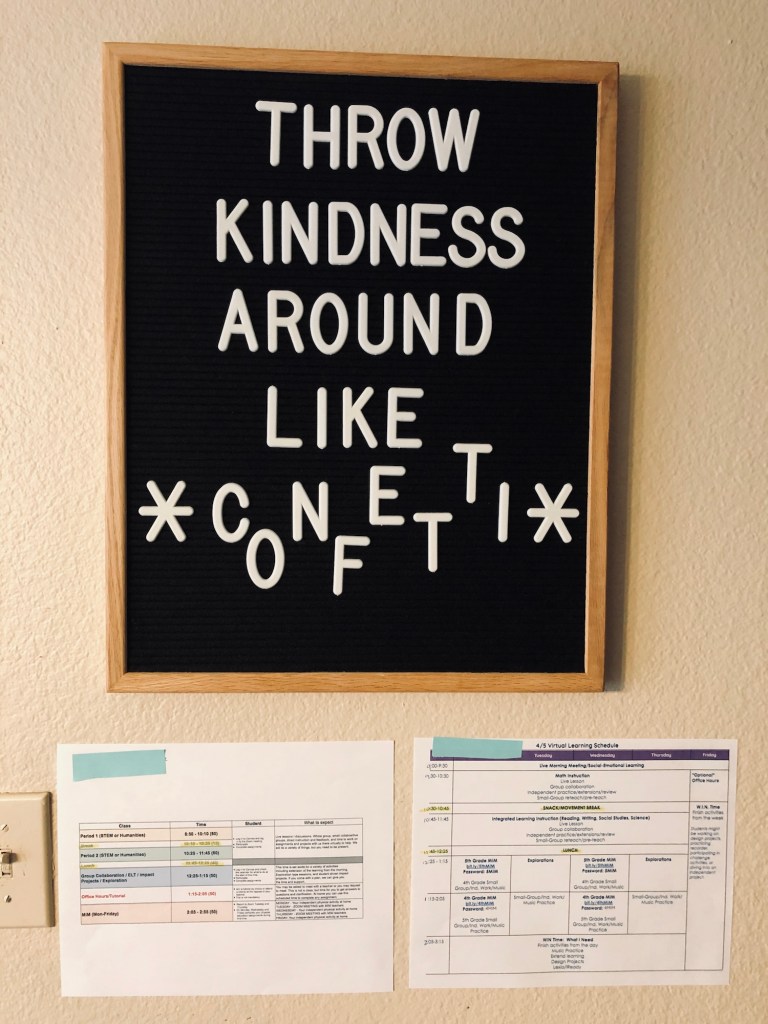
Throughout the Day: Staying Organized Saves Our Sanity
As mentioned, my kids’ school days are set up in chunks of time for each class subject. We all prefer tangible paper trails and dry erase boards over digital calendars, so I printed up and posted their schedules on the dining room wall so we can all see at a glance what’s happening when and so we all know when snack and lunch breaks take place. I have a magnetic dry erase board on my fridge that functions as my brain outside my body. Without it, I’d be lost. My daughter also got this weekly dry erase board for her wall to keep her assignments straight.
I also read a study that it’s really good for kids’ organization if they keep track of their assignments and to-do lists in written form, so we’re big fans of paper planners.

Lunchtime & Multiple Meet-Ups At the Kitchen Table to Check-in
The kitchen table is the heart of our home. The kids have daily snack time (from 10:10-10:30 a.m.) and lunch time (from 11:45 a.m.-12:45 p.m.), so we all sit together to eat and discuss what’s happening and what needs to be accomplished. I offer them fresh, healthy brain foods to keep them alert and energized. I make sure we have tons of grab and go fruit on hand as well as their favorite snacks and food so this downtime is something they look forward to and enjoy.
It’s the silver lining of home learning that we get to spend time together throughout the day and I’m up to speed on how they’re coming along with their schoolwork and privy to what they’re working on.

After School: Getting Off Screens & Outdoors is Vital to Our Happiness
Whether we’re taking an educational field trip to San Diego Botanic Garden, heading to soccer practice, riding scooters and skateboards or walking the dog, we usually can’t wait to get out of the house and into the great outdoors at the end of the virtual school day. It’s the most important part of our day to break away from screens, get fresh air and clear and reset our minds. School ends for both of my kids between 2-3 p.m. each day, depending on whether they have PE or music or need to finish up classwork that was assigned for the day. Normally, they’re out of in-person school at 2:50 p.m., so this means some days we get more free time (including no commute or long school pick-up lines), which I don’t miss.
None of us are fans of distance learning, but we’re grateful we have supportive teachers and the ability to rise to this unprecedented occasion from home. I know my kids will never again take for granted the ability to walk onto their school campus to see their friends and attend classes in person.
Interested in telling your story? Start by filling out our questionnaire here. All stories are anonymous.
—story and photos by Beth Shea
RELATED STORIES:
Distance Learning Works for My 3 Kids & I Can’t Imagine Going Back
7 Homeschool Field Trips Your Kids Won’t Know Are Educational








